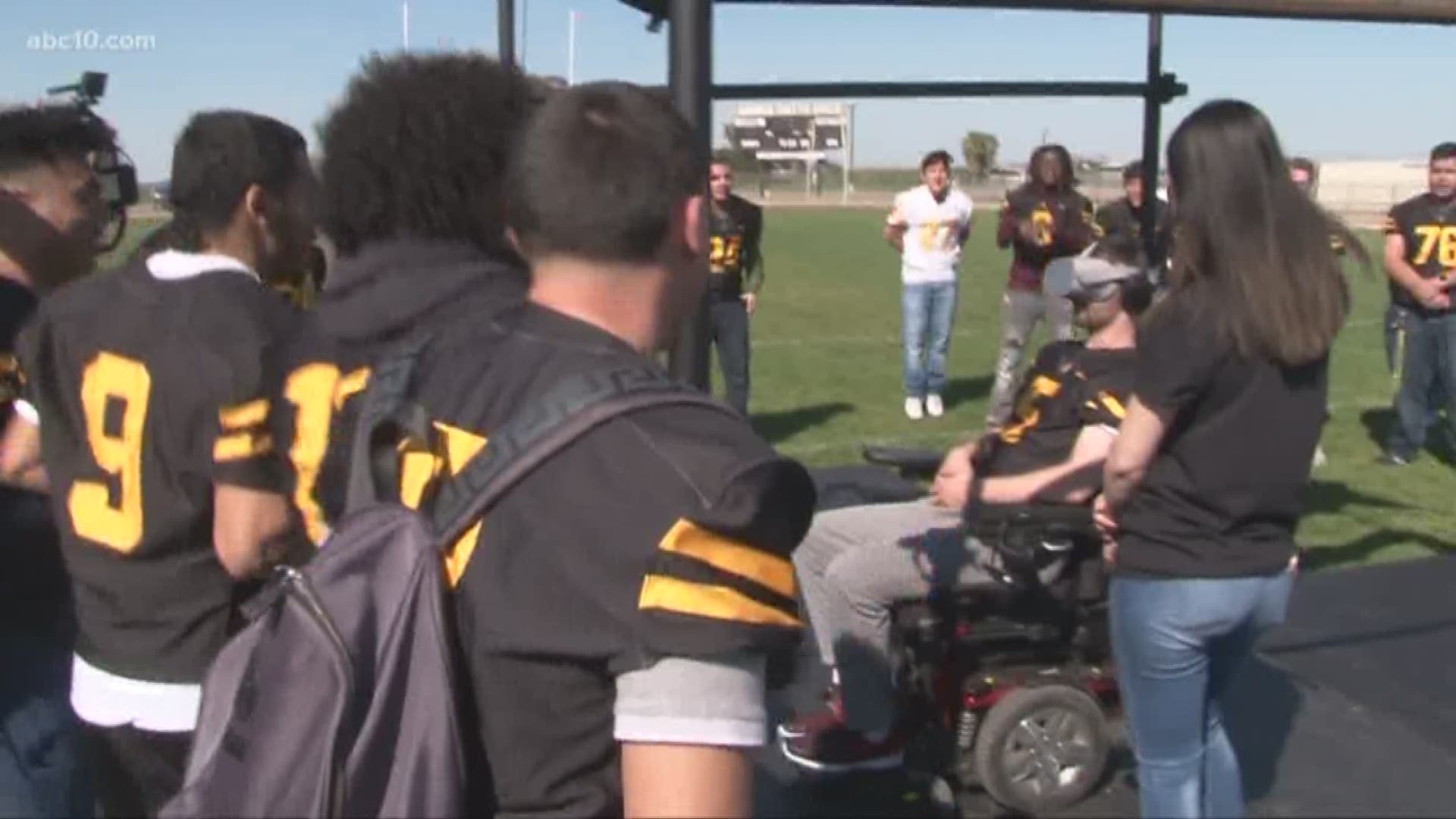CALIFORNIA, USA — A new law signed by Gov. Gavin Newsom sent waves through sports communities after it placed limits on youth tackle football. However, one of the bill’s strongest supporters claims it’s helping a transition toward a new culture for youth tackle football.
“We banded together and have moved forward to basically codify many best practices that are already in place, as well as put some new practices in place through AB 1,” said Joe Rafter, Chairman of the California Youth Football Alliance.
“There’s a lot of things – when I look at the bill, 10 hours of non-contact before you have any contact – We’ve been doing [that] in my local football organization for decades,” he added.
A shift from winning at all costs to safety at all costs
The bill sets processes and standards to help people move toward a "safety-at-all-costs mentality."
“We are defining a new culture for tackle football…this is not just a tackle football issue,” Rafter said. “This is a youth sports issue. We are moving…our industry from a win-at-all-costs mentality to a safety-at-all-costs mentality.”
The law helps do this by taking a blend of leading practices and best practices that are already being done by some organizations.
While the bill had some controversy over limits to full-contact practice for youth - specifically limiting full-contact practice to 30 minutes twice a week and no full-contact practice during the offseason - Rafter said it was derived from a previous law for high school students that set limits at 90 minutes and also kept them from doing full-contact practice during the offseason.
Their main change was reducing the time to 30 minutes to make it more age-appropriate for youth sports.
Other elements such as having 10 hours of non-contact before any contact practice, having an EMT on the sidelines, and even injury tracking and reporting are some of the ways the bill is aiming to make the sport safer.
Rafter says he is no stranger to pulling a player aside and removing them from the game out of concern for their health, even despite emotional protests. He also helps up to 120 players at his football camp achieve all they can in a safe way.
“Football taught me so many things,” Rafter said. “Things I never would have learned anywhere else and - future generations of Americans - they deserve the opportunity to benefit from all that this sport has to give in the safest possible environment.”
Keeping kids safe
While the bill aims to cover shifts in culture and safety for the players, concussions in football remain a hot button issue, even if football doesn't hold a monopoly in that area.
“There’s nothing special about football that makes a football blow to the head worse than a soccer blow to the head or worse than falling off your bike and getting a concussion...," said Dr. Brandee Waite, a sports medicine physician at UC Davis Health, "but I think that there are ways to make football and other sports safer, so that kids and adolescents have less risk of having the types of injuries that put them at risk for problems with their thinking and their brain function down the line."
To that effect, the new law applies a number of safety standards that also deal with concussions.
Every coach has to get certified in areas dealing with tackling techniques that minimize contact to the player’s head while playing, CPR, first aid, and concussion safety training. Most of those certifications also have to be done every year.
On top of that, a third-party observer with the same training level as the coach is also required to watch the practices.
Even though concussions rarely have visual signs to an observer, that “when in doubt, sit them out” strategy can generally be pretty effective - especially when kids might choose to hide their symptoms in order to keep playing, says Waite.
“It’s quite effective,” she said. “I think in the past we used to think ‘well, alright, if the kids themselves [don’t] say anything to you about being in pain or hurting then they’re probably fine,’ but we know that that’s not true.”
That observer would see someone be slow to get up, possibly be wobbly on their feet, and also see if something doesn’t seem right.
“In the past, people used to think ‘Oh, if you get knocked out, then you’ve had a concussion, and, if you’re not knocked out, then you haven't had a concussion’ - and we know now that that is simply not true,” Waitte said.
On the player’s side, a concussion might translate to headaches, head pain, visual changes, confusion, or a number of other symptoms, Waite explained. This can come after a blow to the head or even after falling and having your head whiplash.
These improvements come at a time when Rafter says youth tackle is going through a big transformation.
“We’re on this continuous improvement journey... and this path for all youth tackle football coaches to get better,” Rafter said.
Waite added that one of the goals to work toward is finding a safe way for kids to participate while also getting the most out of what sports offer.
“I want parents to be really reassured that they shouldn’t be worried about having their kids play sports. What we should all be working together toward is finding out the safest way we can get our kids to participate so that they can get all the wonderful, physical, emotional, and growth and social benefits that sports provide,” Waite added.

